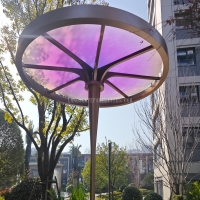Welcome to the website for landscape facilities products and knowledge.
How does the trash can’s design accommodate different types of waste (e.g., liquid, solid)?
Modern trash can designs have evolved to address the challenges of managing diverse waste types, including liquid and solid waste. Here’s how they achieve this:
1. Compartments for Segregation: Many bins feature separate sections for liquid and solid waste, preventing leaks and cross-contamination. This is especially useful in kitchens or public spaces.
2. Leak-Proof Liners: Bins designed for liquid waste often include waterproof liners or inner containers to contain spills, ensuring easy cleanup and hygiene.
3. Durable Materials: Solid waste bins are typically made from sturdy materials like high-density plastic or metal to withstand heavy loads without deformation.
4. Ventilation Systems: Some designs incorporate airflow mechanisms to reduce odors, particularly useful for organic or wet waste.
5. Eco-Friendly Innovations: Compartments for recyclables and biodegradable waste encourage sustainable disposal practices.
By integrating these features, trash cans enhance functionality while promoting cleaner, more efficient waste management.
Related search:

Recommendation
Metal frame with gradient color acrylic combined with high-end shading landscape facilities